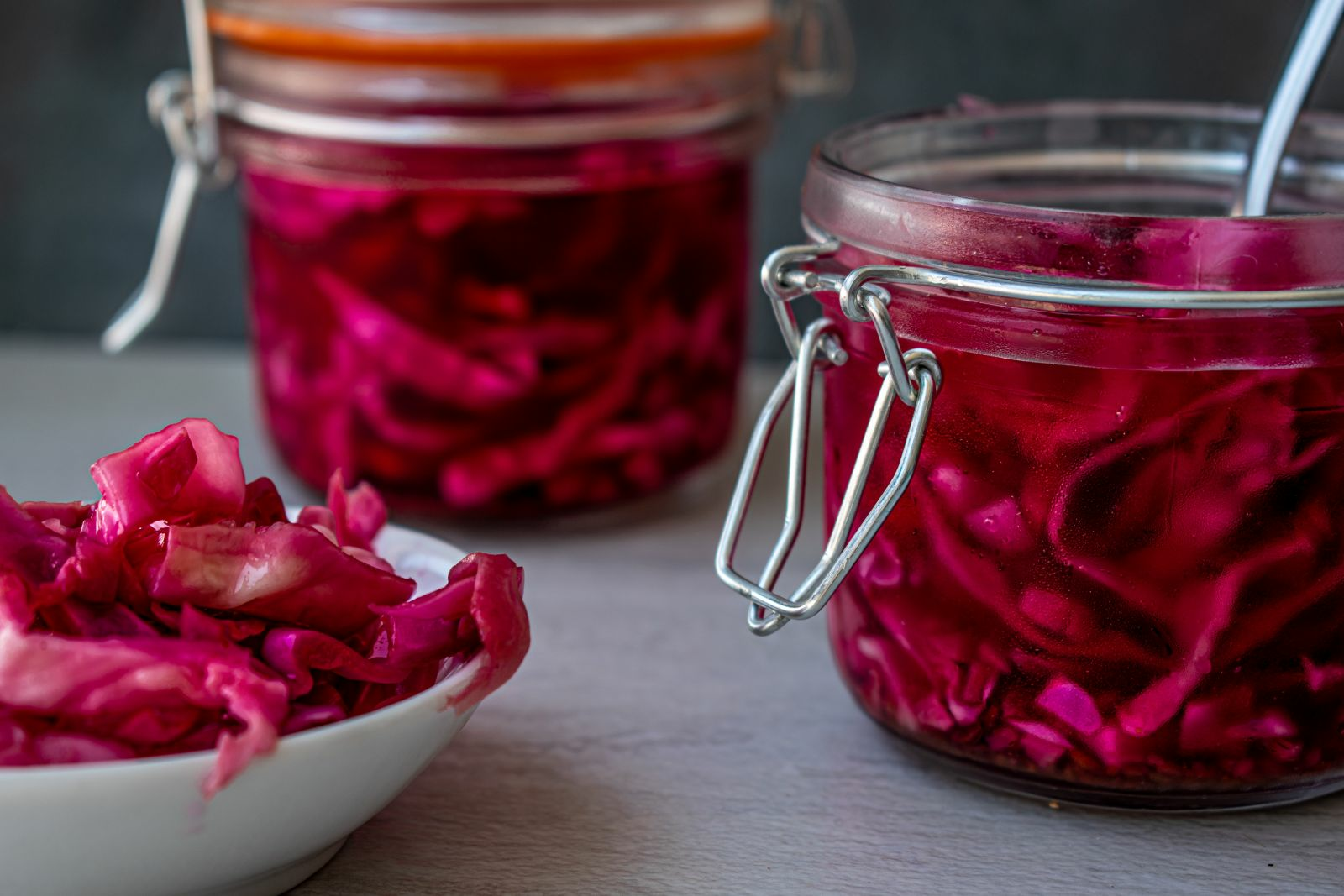Fermenting vegetables correctly
Fermenting vegetables
Lactic acid bacteria (probiotics) multiply during fermentation. The same bacteria that are found in our intestines and ensure that we/our immune system is doing well and that we stay fit. Iodine has an antibacterial effect, which is why iodine-free salt (e.g. sea salt) is used for fermentation. Fermentation is therefore a wonderful method for preserving vegetables in a healthy way.
Option 1: Fermenting chopped or whole vegetables
- clean the jars or other container well and sterilize in a water bath
- peel the vegetables and cut if necessary
- boil the salt-water solution (20 - 30 g/0.7 - 1 fl. oz. iodine-free salt per liter of water) and pour into the container when cooled
- fill in the vegetables with spices
- use weights to keep the vegetables below the water level
- leave to stand at room temperature every 3-7 days, then refrigerate again
Option 2: Ferment grated vegetables
- clean jars or other containers well and sterilize in a water bath
- grate vegetables
- add spices and iodine-free salt (20-30g per kg/0.7 - 1.1 fl. oz. per 2.2 pd) to the vegetables and tamp with a wooden tamper
- layer everything in a jar or container and tamp again
- weigh down with weights
- leave to stand at room temperature every 3-7 days and then refrigerate again
Good to know
With every method of preserving food, we lose some of the vitamins, but with fermentation it is exactly the opposite. Not only are the vitamins in the vegetables preserved, but the lactic acid bacteria produce even more vitamins during fermentation. In scientific terms, this is called "biofilm processing". Put simply, the bacteria communicate with each other and in order to talk to each other, they produce vitamins themselves.
